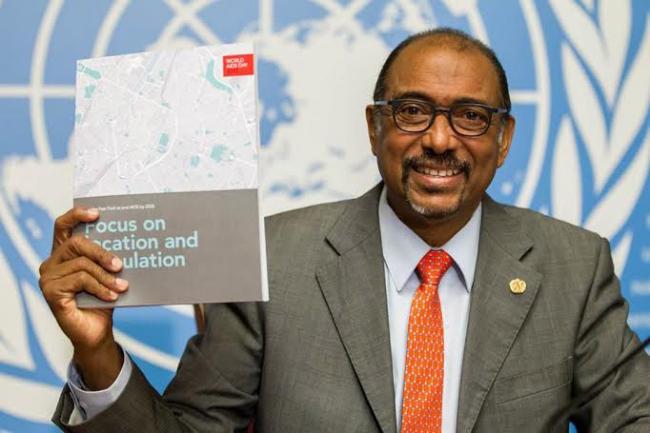25 Nov 2015, 07:02 am Print

“Every five years we have more than doubled the number of people on life-saving treatment. We need to do it just one more time to break the AIDS epidemic and keep it from rebounding,” said the Executive Director of UNAIDS, Michel Sidibé, in a news release.
According to the report titled ‘Focus on location and population: on the Fast-Track to end AIDS by 2030,’ launched ahead of World AIDS Day, more than 50 communities, cities and countries are using innovative approaches to reach more people with comprehensive HIV prevention and treatment services.
It highlighted the need to use better data to map and reach people in the places where the most new HIV infections occur, in order to end AIDS as a public health threat.
Through the report, UNAIDS identified 35 countries that adopted the Fast-Track Strategy, which accounts for 90 per cent of new HIV infections.
UNAIDS said that focusing on location, population and programmes will help in meeting specific targets by 2030, such as averting 21 million AIDS-related deaths, 28 million new HIV infections and 5.9 million new infections among children.
“Today, we have more HIV prevention options than ever before. And with better data, we can become better match makers, finding the right prevention options for the right people,” said Mr Sidibé highlighting efforts made by countries gearing up to double the number of people accessing HIV treatment by 2020.
At present, the report states that an estimated 15.8 million people are receiving HIV treatment or antiretroviral therapy, which is double the number from five years ago, through the Fast-Track Strategy, which uses data to fine-tune the delivery of HIV prevention and treatment services to reach people left behind.
UNAIDS said that the fast-track approach will be instrumental in achieving the ‘90-90-90 treatment target’, which ensures that 90 percent of people living with HIV know their HIV status, 90 per cent of people who know their HIV-positive status are on treatment and 90 per cent of people on treatment have supressed viral loads.
Further, the report found that in 2010, only 7.5 million people received HIV treatment compared to 2.2 million people in 2005 and additionally, at the end of 2014, new HIV infections fell by 35 per cent since the peak in 2000, while AIDS-related deaths fell by 42 per cent since the 2004 peak.
The life-changing benefits of antiretroviral therapy mean that people living with HIV are living longer, healthier lives, which has contributed to an increase in the global number of people living with HIV, UNAIDS said, highlighting the importance of improving immediate access to HIV treatment, once diagnosed.
Additionally, the report highlighted how high-impact HIV prevention and treatment programmes – such as pre-exposure prophylaxis, voluntary medical male circumcision and sexual and reproductive health services – are being successfully implemented in various locations and for different populations, including adolescent girls and young women and their partners, pregnant women living with HIV, sex workers, transgender people, gay men and other men who have sex with men and people who inject drugs.
For example, the report found that Kenya reached more female sex workers with a comprehensive package of HIV services and reduced the number of HIV infections among sex workers through nationwide mapping of the country.
At the same time, the report shows that areas with fewer numbers of people living with HIV and lower HIV prevalence are more likely to have discriminatory attitudes than areas that have more cases of HIV as education and understanding about HIV are usually higher in countries where HIV is more prevalent and where more people are receiving treatment.
Lastly, the report demonstrated how countries can redistribute resources to improve access to HIV prevention and treatment services by adopting the fast-track approach and front-loaded investments, as this aids in closing gaps faster and save resources in order to meet targets by 2020.
“Everyone has the right to a long and healthy life,” Sidibé said.
The UNAIDS report comes just days ahead of World AIDS Day, celebrated around the world on 1 December each year and used to raise awareness, commemorate those who have passed on, and celebrate victories, such as increased access to treatment and prevention services.
Photo: UNAIDS/Pierre Albouy
- Malaria vaccine price slashed! Gavi and UNICEF make life-saving shots cheaper
- Jaw-dropping study reveals humans didn’t invent kissing — Apes started it 21 million years ago!
- Revealed: Ultra-processed foods linked to deadly diseases
- Is Keto ruining your body? Study reveals alarming metabolic risks!
- Short strolls are useless? Experts say this simple walking trick boosts your heart!


-1763561110.jpg)



